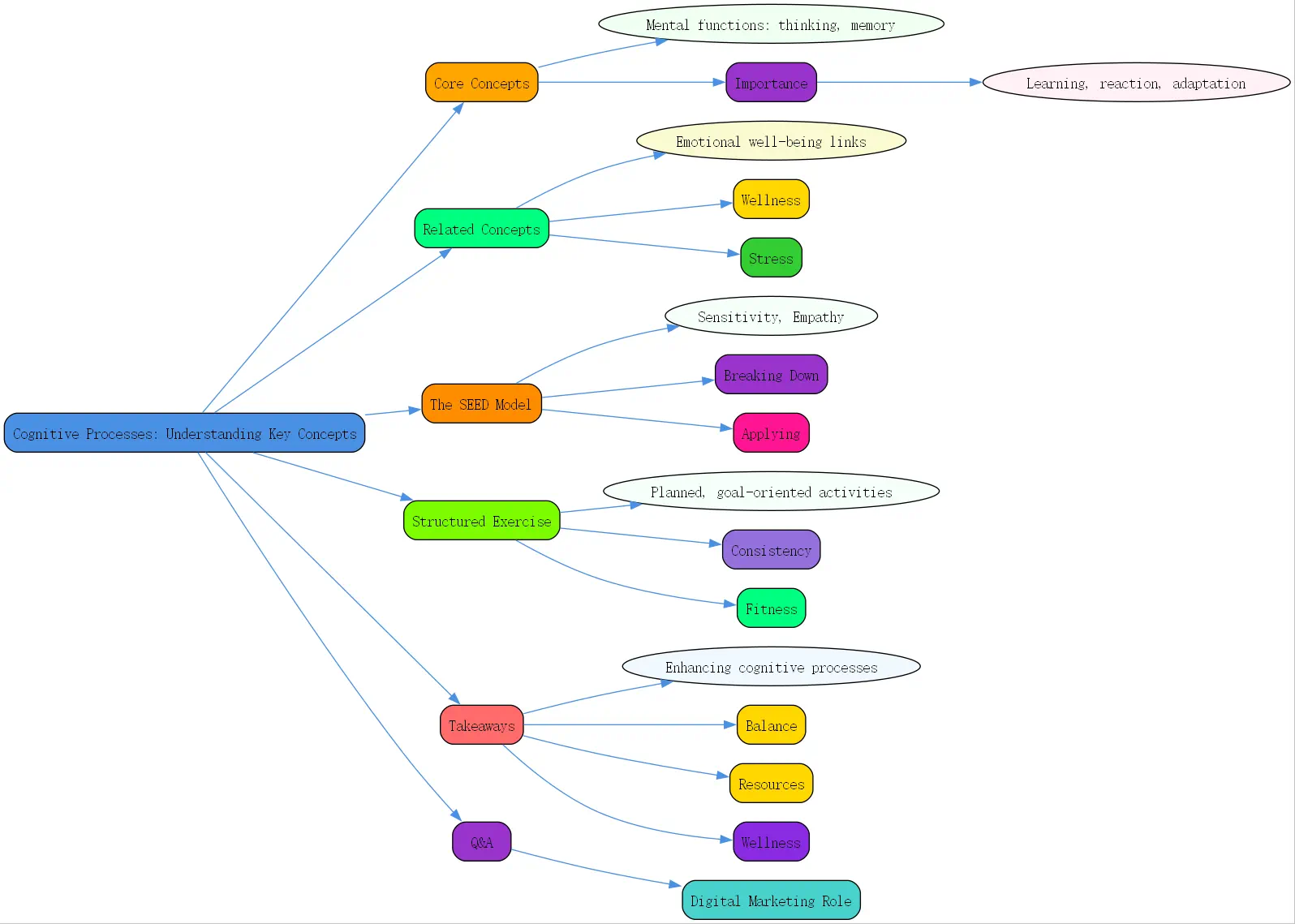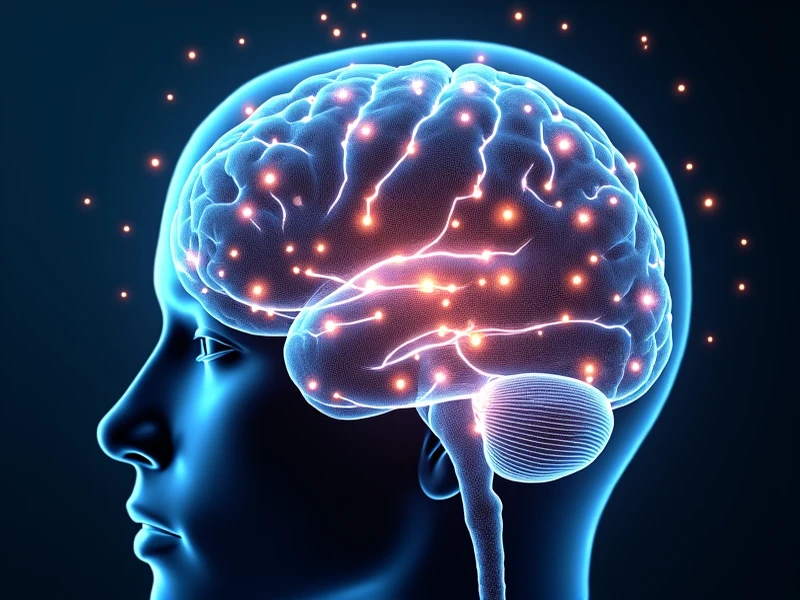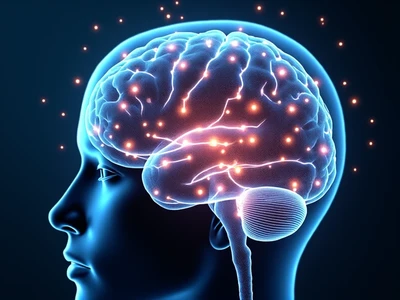
Discover cognitive processes and their role in daily life. Explore related concepts like wellness, stress, and structured exercise through the SEED model for deeper insights.
Which of the Following Best Describes Cognitive Processes: Understanding Core Concepts
Cognitive processes are at the core of how humans interpret, analyze, and interact with the world around them. They refer to mental functions, including thinking, memory, perception, problem-solving, attention, and decision-making. These processes drive how individuals learn, react, and adapt to challenges, making them vital for personal and professional success.
To understand which of the following best describes cognitive processes, think of them as the mental mechanisms that enable people to receive information, analyze it, and make decisions based on their understanding. For example, recognizing patterns during a conversation or recalling directions is a result of our cognitive processes operating effectively.
Importance of Understanding Cognitive Processes
Cognitive processes influence every aspect of life. Whether you’re navigating complex workplace dynamics or simply communicating with loved ones, these mental functions shape behavior and interpersonal relationships. They are especially crucial in professional settings, where managing tasks, solving problems, and maintaining productivity hinge upon robust cognitive abilities.
Understanding your own cognitive processes—or those of others—can help in fostering empathy, enhancing group collaboration, and improving mental clarity. It creates space to embrace personal growth and tackle stress in high-pressure situations.
Exploring Related Concepts and Keywords
Our mental and emotional well-being is often tied to interconnected psychological concepts. Let’s explore how understanding related ideas can better frame our cognitive processes:
Which of the Following Best Describes the Cone of Depression?
The cone of depression is a term illustrating the psychological weight individuals feel when coping with prolonged exhaustion, stress, or emotional challenges. It represents deep, overwhelming feelings that trap a person in a downward spiral, limiting their ability to process thoughts clearly or make rational decisions.

Factors influencing the cone of depression include environmental stressors, professional burnout, or limited access to supportive relationships. Recognizing the cone of depression early can prevent mental health deterioration. Resilience strategies, emotional healing, and seeking therapy—such as methods highlighted in Managing Social Anxiety: A Cognitive Behavioral Therapy Approach Client Workbook—can reduce its effects and reestablish mental balance.
Which of the Following Best Describes Wellness?
Wellness transcends physical health to include mental, emotional, and even spiritual well-being. It is a holistic approach focused on achieving a balanced and fulfilling life. When answering “”which of the following best describes wellness””, think of it as intentional habits and practices that promote overall health and happiness.
Key Elements of Wellness:
- Physical Wellness: Engaging in practices like structured exercise, balanced diets, and regular rest. Find out Which of the Following Phrases Best Describes Structured Exercise below for more details.
- Mental Wellness: Maintaining mental clarity and resilience, including activities like meditation, counseling, and self-reflection.
- Emotional Wellness: Recognizing and regulating emotions to foster positive relationships and reduce stress.
Integrating these elements can result in thriving mental and physical states, reducing burnout and improving productivity—a critical area noted by productivity expert Claire Kumar. As she highlights, taking intentional steps toward wellness can improve sustainable performance while avoiding exhaustion.

Which of the Following Best Describes Stress?
Stress is the body’s natural response to external pressures, and understanding its nature is key to managing it effectively. When exploring which of the following best describes stress, we find that it manifests in different types:
Types of Stress and Their Impact:
1. Acute Stress: Short-term stress triggered by immediate dangers or pressures. While manageable, repeated episodes can lead to exhaustion. 2. Chronic Stress: Long-term, persistent stress caused by ongoing challenges, such as work demands or emotional trauma. Left unchecked, it often leads to burnout and physical health issues.
Stress impacts every facet of life, from decision-making to interpersonal behavior. Coping mechanisms, including mindfulness and structured exercise, can alleviate its intensity and help individuals reframe their thought patterns. Turning to resources such as Managing Social Anxiety: A Cognitive Behavioral Therapy Approach Client Workbook can enhance stress management strategies.
The SEED Model: Sensitivity, Empathy, Emotional Responsiveness, Depth of Processing
Introduced by Claire Kumar and inspired by Dr. Elaine Aron, the SEED model explains how highly sensitive individuals process, interpret, and react to stimuli in their environments. This concept not only aligns with understanding cognitive processes but also illustrates their complexity and beauty.
Breaking Down the SEED Model
Sensitivity to Stimuli: Recognizing Sensory Overload
Highly sensitive individuals have heightened responsiveness to their surroundings. This trait sharpens cognitive processes, allowing them to notice subtle details with incredible precision. However, constant sensory overload—such as noisy environments—can result in emotional exhaustion, limiting performance and well-being.
Empathy: Connecting with Others on a Deeper Level
Empathy is a cornerstone trait among highly sensitive individuals. Their ability to feel and respond to the emotions of others creates meaningful human connections and enhances interpersonal cognitive processes.
Emotional Responsiveness: Managing Intense Emotions
The SEED model highlights how emotional responsiveness allows individuals to process feelings effectively, creating room for self-awareness and personal growth. On the flip side, managing intense emotions requires resilience to prevent burnout or overwhelm—a challenge frequently seen in highly sensitive populations.
Depth of Processing: The Power and Pitfalls of Analysis
Highly sensitive individuals demonstrate a deep ability for connecting ideas and problem-solving. While their cognitive depth enhances creativity and rich thinking, it can also lead to analysis paralysis. Understanding the balance between exploring ideas and taking decisive action is critical for leveraging this cognitive strength.
Applying the SEED Model in Daily Life
1. Strategies for Highly Sensitive People: Managing stress and sensory overload through mindfulness, regular breaks, and structured exercises. 2. Creating Supportive Environments: Adjusting lighting, sound levels, and social settings to promote comfort and productivity.
Which of the Following Phrases Best Describes Structured Exercise?
Structured exercise refers to planned activities, designed with specific health goals in mind. These exercises may include routine practices such as yoga, running, or strength training programs.
Components of Structured Exercise:
- Regular schedules to encourage consistency.
- Goal-oriented routines tailored to physical fitness, mental clarity, or emotional resilience.
Benefits of Regular Structured Exercise:
Structured exercise fosters peace of mind, reducing stress while promoting physical and emotional wellness. It also enhances cognitive processes by improving focus, memory, and decision-making abilities. Claire Kumar’s journey with fitness in Tokyo underscores its transformative role in emotional well-being and productivity, offering inspiration for highly sensitive professionals looking to integrate such practices into their routines.

Takeaways: Practical Tips for Enhancing Cognitive Processes
- Balance Responsibilities: Highly sensitive individuals can avoid exhaustion by delegating or simplifying tasks.
- Utilize Resources: Explore tools like Managing Social Anxiety: A Cognitive Behavioral Therapy Approach Client Workbook for actionable insights.
- Adopt Wellness Practices: Integrating structured exercises and mindfulness techniques can mitigate stress and improve well-being.
- Create Empathetic Environments: Support sensitive individuals by minimizing sensory distractions.
Question & Answer Section
What Role Do Cognitive Processes Play in Digital Marketing?
Cognitive processes in digital marketing are critical for understanding audience behavior, reaction patterns, and decision-making tendencies. Insights into how users think, analyze, and decide can enable marketers to tailor content, optimize UX design, and enhance engagement metrics.
Professionals can improve marketing strategies by exploring psychological models, such as SEED, to better empathize with target audiences. Tapping into empathy and emotional responsiveness can refine brand communication efforts effortlessly.

